The Last Guardian's divisive design is precisely what makes it Team Ico's best work to date
Two years on from launch, Edge Magazine looks back on what makes The Last Guardian such a special entity
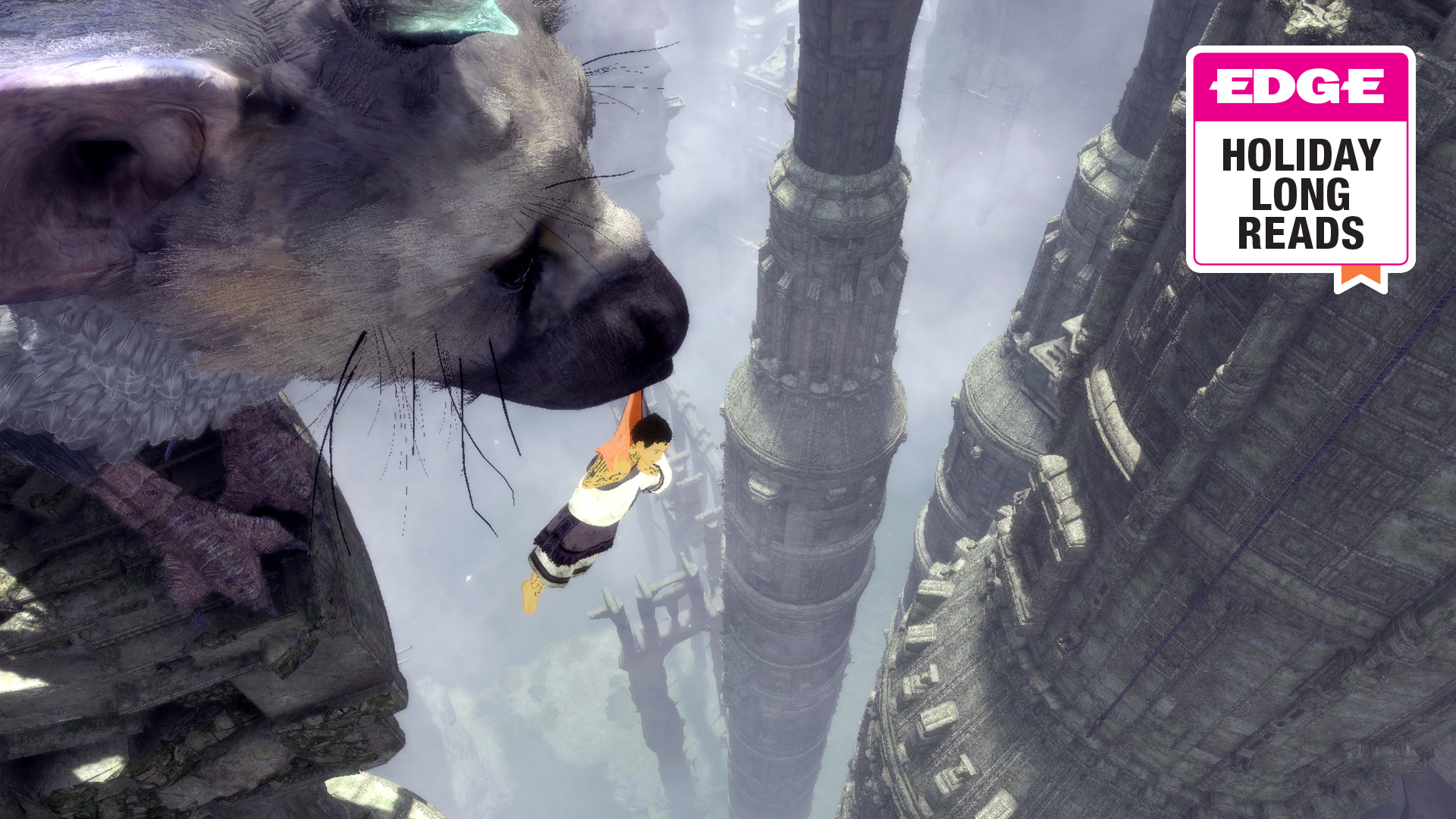
You’re going to have to be patient. And you can’t say Fumito Ueda doesn’t give you fair warning. Not long into The Last Guardian, the titular chimera Trico gently snuffles at the player character, a young boy, nudging him awake with his beaky nose. It sounds like a heartwarming scene, but by then it’s already knocked him out twice.
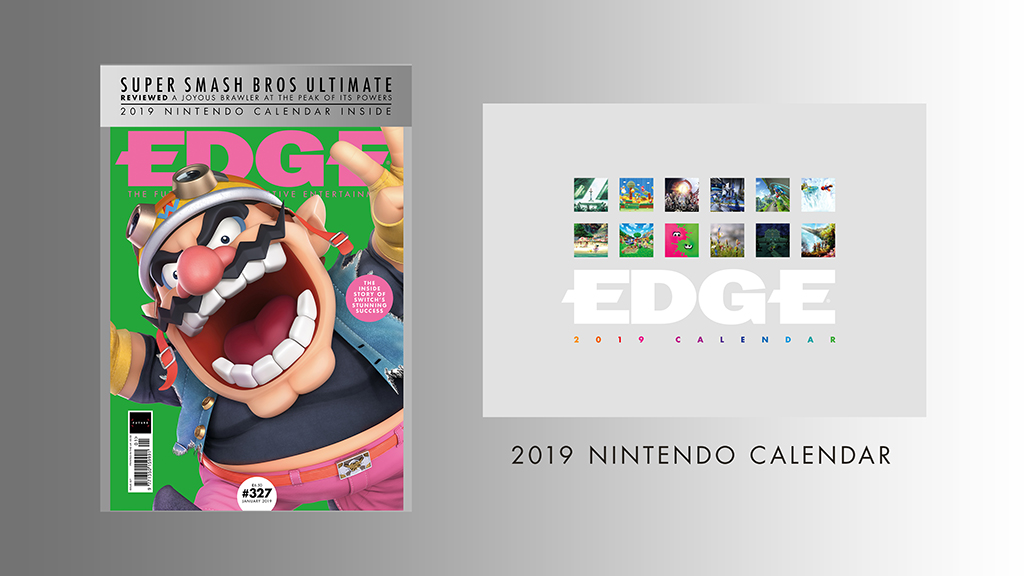
Subscribe to Edge Magazine in print or digital for more in-depth features, reviews and interviews about the future of interactive entertainment.
The first time, it bucks and thrashes wildly as you try to remove a spear from near its back legs, booting you into a wall. Then, as you tug another from by its shoulder, it shrieks and throws you violently to the ground. It may already have swatted you aside with its huge claws if you got too close while trying to feed it a barrel of glowing blue goop to get its strength up. You expected a saccharine-sweet fable about a boy and his adorable animal friend? Guess again.
This is one relationship you need to work at. Whatever you think about the game surrounding it, it’s almost impossible not to marvel at Trico, a staggering feat of technical engineering, AI, animation, sound design and good old-fashioned graphical heft. Within Trico, you’ll see elements of all the creatures depicted in the game’s illustrated intro.
The affectionate nuzzles are those of a dog; the way it wiggles its backside before it jumps is pure cat; his tiny, broken wings belong to an injured fledgling. Indeed, when you first meet Trico he reacts like an abused pet: his nervous growls as you tentatively approach him speak to a history of violent treatment at the hands of an unseen master.
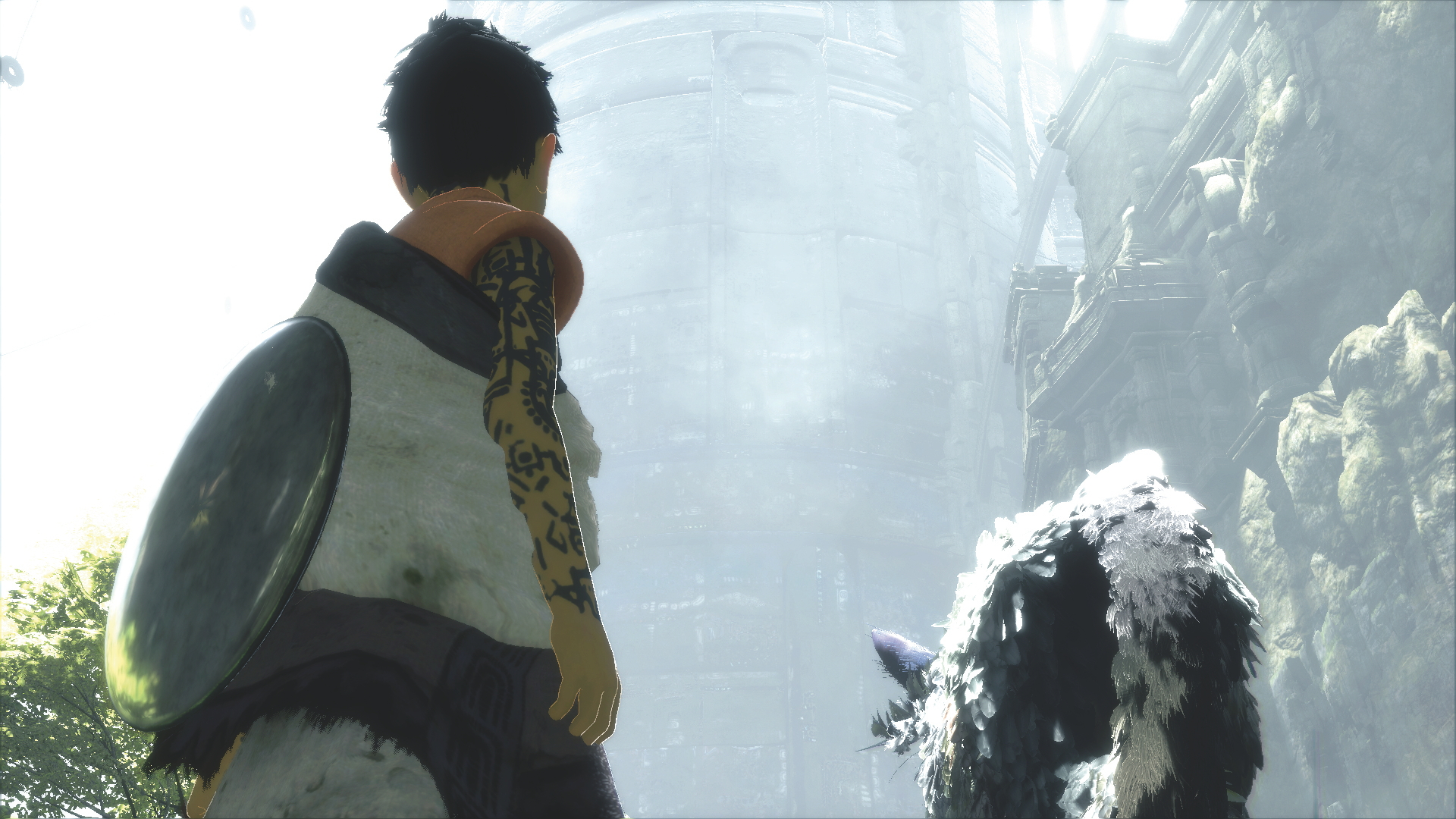
And so, when you later pull spears embedded in its limbs and flanks, you wince. Partly because you’ve been trained to anticipate Trico instantly lashing out when they come free, but mostly because it’s genuinely harrowing to see and hear him in pain. Somehow, you’ll try to do this in such a way as to make it gentler for him, applying enough force to drag it free but not so much that it hurts. And then, unless you’re completely heartless, you’ll instinctively find yourself stroking Trico afterwards to pacify him.
All of this is necessary to establish a connection between the two, as they steadily come to rely on one another to make their escape. The Last Guardian is, essentially, a jailbreak with the most powerful cellmate you could possibly wish for. And like most prisons, this isn’t a place built to accommodate either of you comfortably. There are tiny crawlspaces, low-ceilinged rooms and narrow cracks that only the boy can squeeze through.
Elsewhere there are gaps that are too far to jump, ledges that are far too high to reach, obstacles that only Trico can destroy (the fierce and untamed bolts of lightning that fly from his tail are, again, anything but cute). As such, the two have no choice but to learn to work together to get by. For a while that makes for a decidedly unconventional kind of action-adventure, where exploration is punctuated by the need to effectively train an obstinate pet.
Weekly digests, tales from the communities you love, and more

Trico is large and inherently slow, and one of the great joys of the game – and one of its great frustrations for some – is watching it gradually manoeuvre itself into position to do your bidding. Sometimes this involves it ignoring you for a little while, or doing the wrong thing entirely. Occasionally it seems distracted or simply disinterested.
But over time, given clear and consistent instruction, you’ll find Trico responds more predictably. You learn how to read its body language to gauge whether he’s understood what’s being asked of it. And though on occasion the puzzles do seem a little obtuse – at one stage you need to command Trico to jump to get it to dive underwater, a technique that is never explained – sticking points grow steadily rarer.
You’ll even begin to experience pangs of separation anxiety. The moments when you’re forced to leave Trico behind, however briefly, become a wrench, much as they did in Ico with Yorda. It’s a selfish concern, in some ways: you’re worried that your friend might not be safe on its own, true, but also that you might be in peril without it. And the boy is particularly vulnerable here.
Armoured guards lunge for you, like Ico’s shadowy enemies, attempting to drag you away to some unknown fate. You can briefly stall them by throwing barrels and the like, but it’s so much easier to deal with them when Trico’s around. He’s capable of skittling several enemies with a single pounce, batting away the stragglers like a cat toying with a ball of yarn – and in these cathartic rescues you’ll feel an even stronger connection to it. Theirs is a bond forged through adversity, then, and it’s a struggle the player gets to really feel.
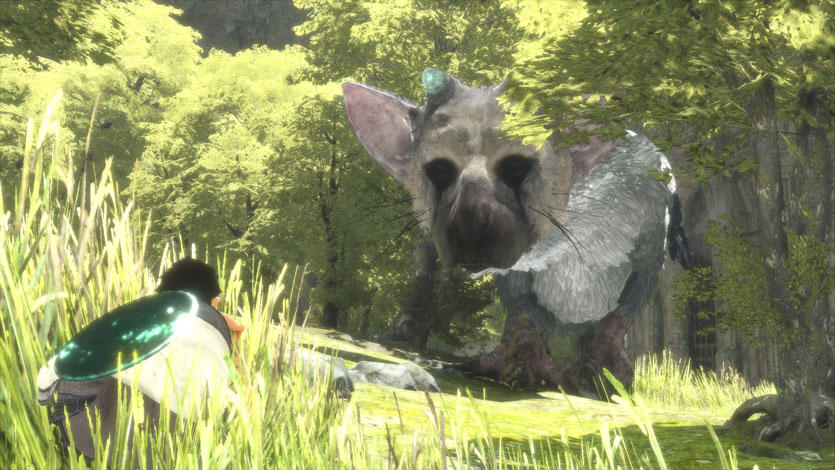
This is a game of persistent little frictions where progression doesn’t feel as smoothly moderated as many modern games. Yet that’s typical of Ueda’s work. Ico and Shadow Of The Colossus also play the long game, finding ways to discomfit you without putting you off entirely. Like The Last Guardian, they feature a degree of baked-in inconvenience. Think of the controller rumble where you physically feel the tug of Yorda’s hand, slowing you down. Think of Argo refusing to turn or suddenly veering off to one side, forcing you to course-correct, to pull tight on the reins – and how, over time, he comes to trust you and stops resisting, and your relationship is all the more meaningful for it.
Ueda’s games have historically pushed back rather than yielding, reminding the players that there are forces beyond their control. You are not the centre of the universe. There is always something or someone to keep you humble. With all that in mind, the divisive reaction that greeted The Last Guardian was, in some ways, surprising. In hindsight, a degree of disappointment was inevitable: nine years in development meant nine years during which anticipation reached a level to which no game could ever hope to live up. More significantly, it meant nine years of player expectations having been recalibrated by an entire console generation: in some respects, The Last Guardian still felt like a product of the PS2 era, where creative experimentation and jagged edges were more enthusiastically welcomed.
Since Colossus, open-world power fantasies have become the blockbuster norm: we have collectively grown accustomed to games giving us everything we want. We’re so used to being catered to, so used to being in control, that the idea of having to really work for something – or certainly the idea of relying on someone or something else to get by – has become anathema. Its problems shouldn’t be ignored, though many of these have been exaggerated, and in some cases simply misunderstood.
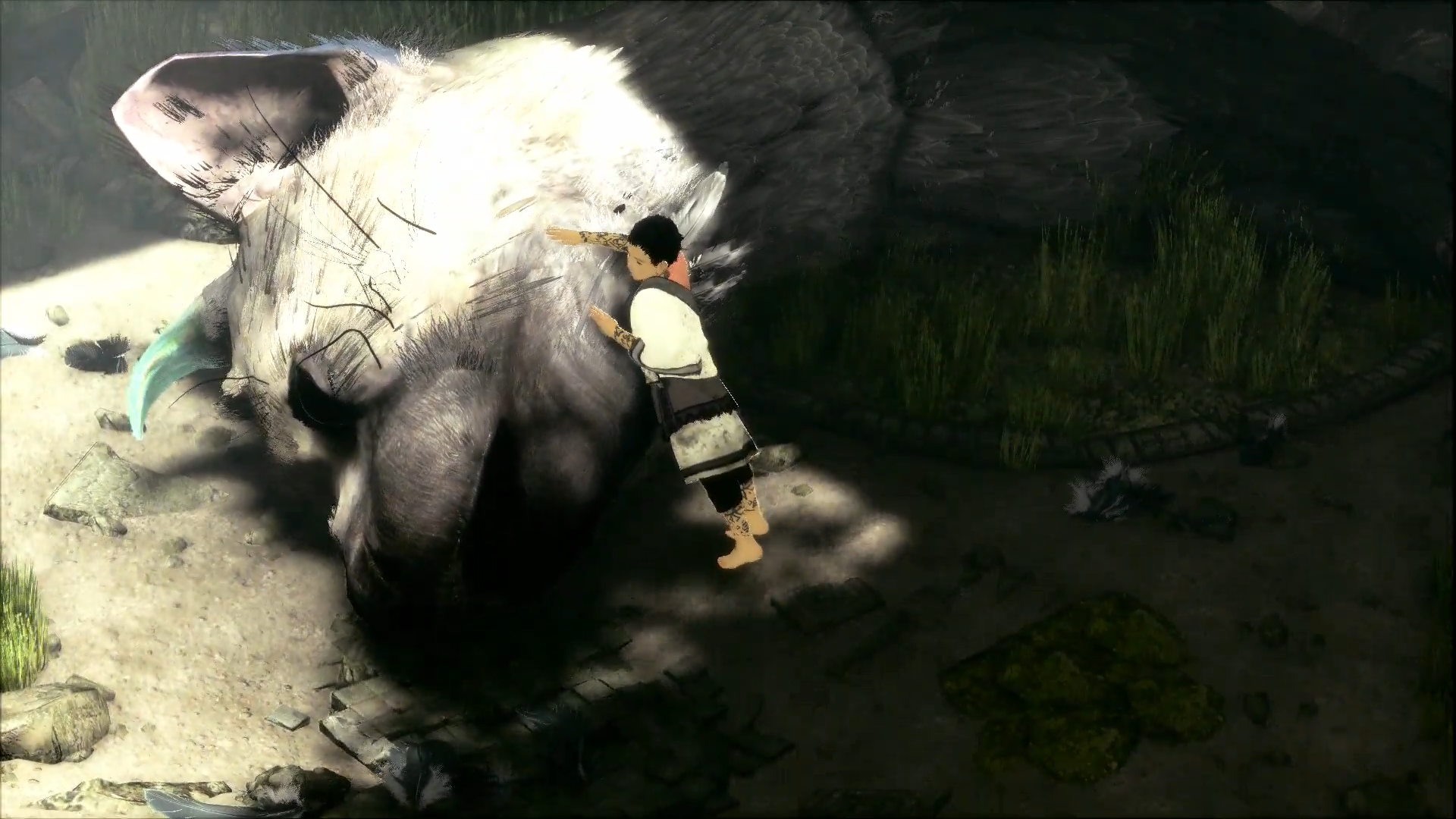
The much-derided camera is certainly no worse than Shadow Of The Colossus: sure, it occasionally has trouble navigating some of its more cramped interiors, but show us a third person game that doesn’t. The boy’s skittish movement, too, was a bone of contention, dismissed in some quarters as technical sloppiness. Yet it would surely have been straightforward enough to make him slower, to let him turn on a dime – particularly once Mark Cerny and his technical crew had been parachuted in to help get the game out the door. Which only goes to prove that it’s there for a reason.
"Ueda’s games have historically pushed back rather than yielding, reminding the players that there are forces beyond their control"
The boy’s unruly momentum is exactly what you’d expect of a young child, where their legs can seem to move faster than their brain. It’s an expressive kind of run, one that communicates the giddy excitement of youth – and, yes, offers a distinct contrast to the slow, lumbering Trico, amplifying that odd-couple dynamic. Ultimately, those unorthodox design choices – and the player’s own perseverance – pay off. That first leap of faith, where you plunge in the hope that Trico will catch you in his mouth or with his tail, is all the more thrilling because of the difficulties you’ve endured in gaining his trust.
Each of these little breakthroughs in communication feels like a revelation, none more profound than the moment Trico overcomes his fear and intervenes to save the boy. As guards threaten to drag him away, the beast smashes through the stained-glass eyes that, until now, have had it whimpering and cowering in terror – reminders, no doubt, of past abuses. It’s clearly a scripted beat, but since it occurs in-engine, it feels organic – and the accompanying surge of honest-to-goodness euphoria will make you cheer or have you wiping away a tear.
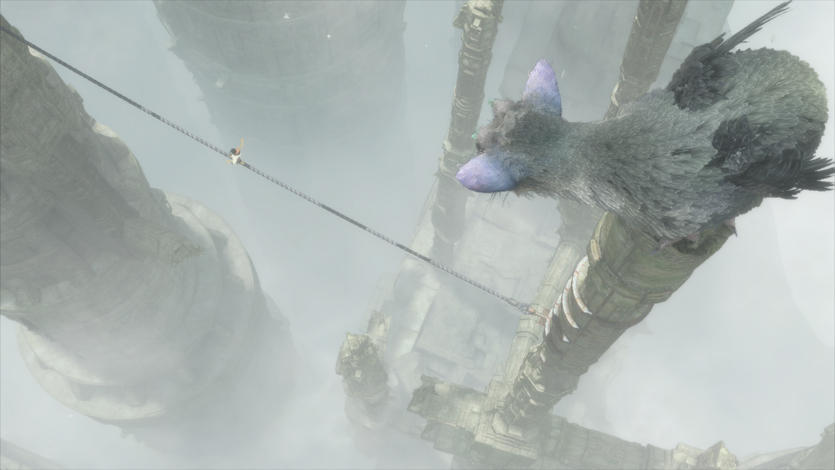
You’ll feel a similar sensation during the game’s climactic climb. By this stage, Trico should move almost without prompting, leaping from tower to tower without the traditional point and shout. What at first glance would seem to be an arduous process is practically automated – albeit informed by every interaction you’ve had with Trico beforehand. It’s the perfect expression of how your relationship has changed throughout your journey: those rough edges have been sanded down, and progress finally feels smooth.
Then, of course, comes one final act of resistance, one final push back from Ueda. As angry men from the boy’s village point their spears at the injured beast, suddenly the roles have been heartbreakingly switched: now you’re the one being asked to do something you’d rather not. For once, it’s time for the boy to save Trico – though he can only do so by pushing it away, a deliberate reversal of those opening scenes. In that moment you realise just how much you’ve grown to care for the big lummox. Yes, you have to be patient – but here, at the very end, you get the richest of emotional rewards in return.
This article originally appeared in Edge Magazine. For more great gaming coverage, you can subscribe to Edge here.

Chris is Edge's former deputy editor, having previously spent a decade as a freelance critic. With more than 15 years' experience in print and online journalism, he has contributed features, interviews, reviews and more to the likes of PC Gamer, GamesRadar and The Guardian. He is Total Film’s resident game critic, and has a keen interest in cinema. Three (relatively) recent favourites: Hyper Light Drifter, Tetris Effect, Return Of The Obra Dinn.


